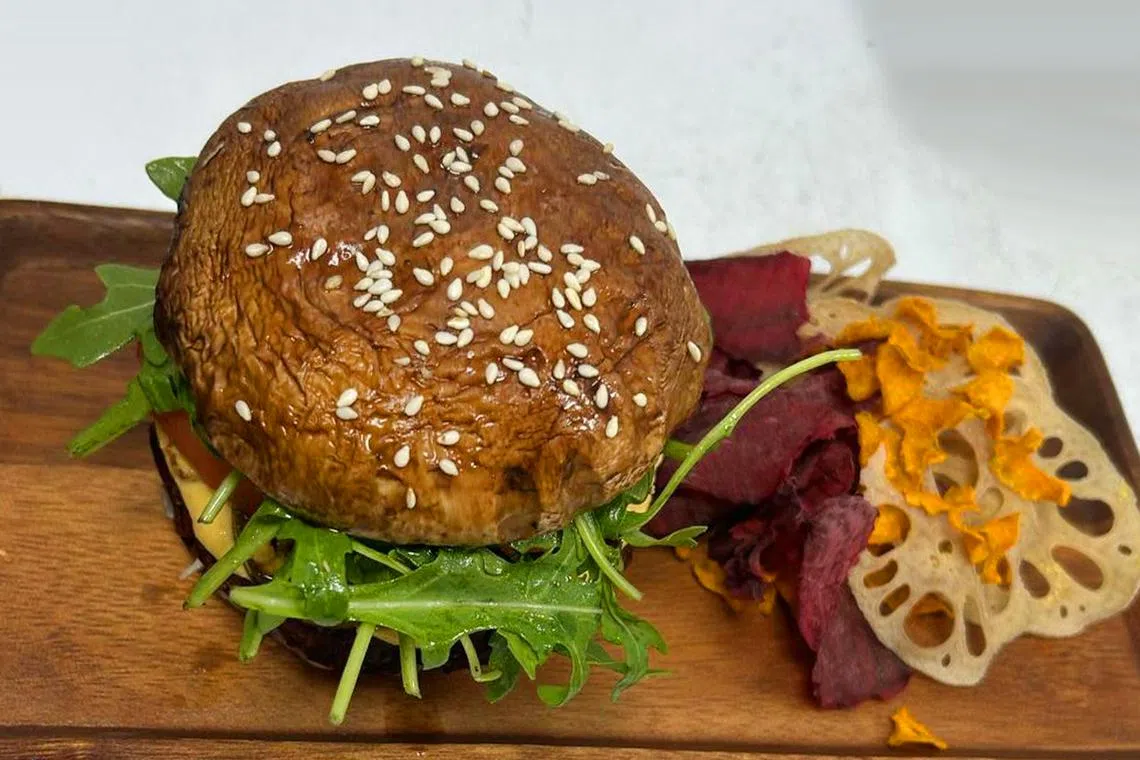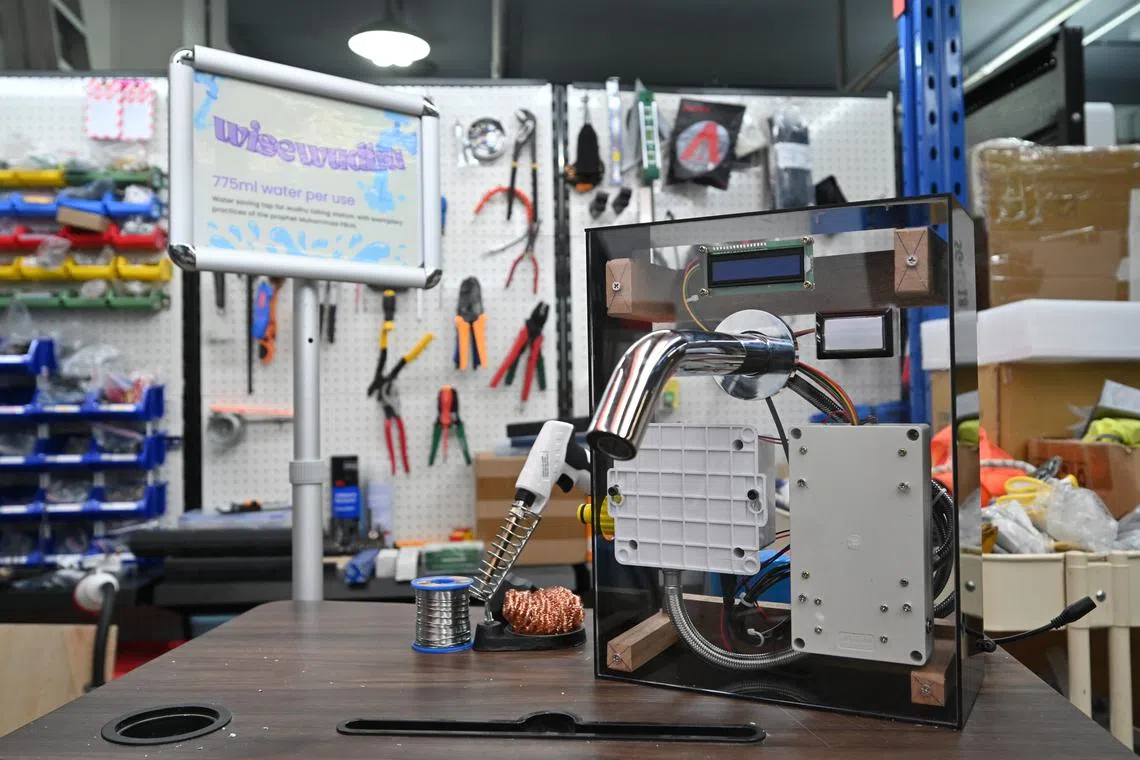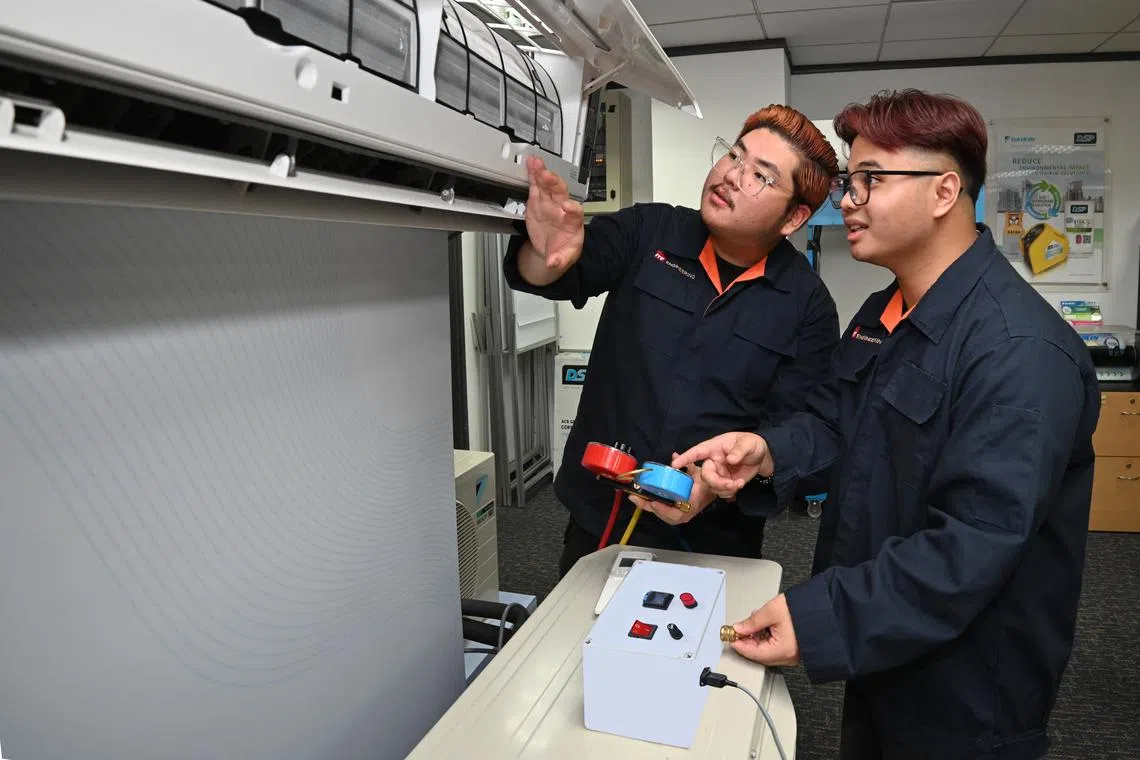Showing green possibilities: ITE students bring new ideas to SMEs
Solutions that can save water and cut emissions are among winning projects at third edition of HSBC-NYAA-ITE Sustainability Initiative

[SINGAPORE] A tie-up between the Institute of Technical Education (ITE) and local businesses not only gives students workplace experience, but also brings fresh green ideas to the participating small and medium-sized enterprises (SMEs).
A plant-based burger and a water-saving solution were among the winners in the third edition of the HSBC-NYAA-ITE Sustainability Initiative, which paired 153 ITE students with 46 local businesses.
Launched in 2020, the initiative is a collaboration between HSBC Singapore, the National Youth Achievement Award (NYAA) Council and ITE. It aims to promote sustainability by having students work with businesses to improve their environmental practices.
The latest edition began in February 2024 and culminated in an award ceremony on Jul 10 this year, with prizes of S$2,000, S$1,000 and S$500 for the top three teams.
“Kindness meat”

Winning third place was a team that rekindled a food company’s interest in healthy burgers.
ITE College Central engineering students Juanita Jauhari Jos, Muhammad Danish Haziq Mohamed Hazizi and Pedro Keith Kwa developed a plant-based burger with a low carbon footprint for health-science food company Wholesome Savour.
The students focused on clean-label ingredients – produce grown without chemicals or pesticides – to make the product healthier and more sustainable.
The main challenge: taste, as not all flavourful ingredients could be used. For instance, one ingredient they considered adding to the patty, plant-based bacon, “was tasty, but the carbon footprint was too high”, said Muhammad Danish Haziq.
After several testing rounds and feedback from 50 consumers, the team landed on a beetroot-based patty with mushroom buns and clean-label cheese.
They dubbed it the “kindness meat” burger, as the patty mimics beef but produces just 6 per cent of the emissions: 3.5 kg of carbon dioxide per kilogram, compared with 60 kg for one made from regular beef.
Jason Fong, Wholesome Savour’s chief executive officer, said the students rekindled interest in a product category the company had previously shelved.
“We never thought having a burger would (be viable),” he said, noting that the market for plant-based burgers is already crowded.
“But (the students) told us: ‘If we can eat a very healthy burger... we’re very happy.’ That gave us the drive (to embark on this project).”
And while businesses may tend to focus on “the underlying numbers”, Wholesome Savour’s young partners looked at market trends, noted Fong.
Speaking of how the students got the company to see things differently, he said: “We can be too fixated in the way we do things, but they came in with a fresh perspective and sparked ideas we could embrace.”
Wholesome Savour plans to gauge public reception towards the burger by offering it at the Sengkang General Hospital staff canteen later this year.
Water wisdom

The second-place project focused on water conservation, with ITE College East electrical-engineering students Nur Ain Maisarah Jurimi, Alyssa Naushin Muhammad Ramli, Nur Aqilah Azman and Nadhrah Syairah Muhamad Redzwan working with sustainable-energy firm Hoh Say.
Hoh Say had existing partnerships to install clean-energy solutions in mosques. The students worked with the firm to develop a prototype that cuts water use during ablution – when mosque-goers ritually cleanse themselves before entering the mosque.
The students found that each individual used 5 to 6 litres. Their solution, tested at Masjid Ahmad Ibrahim in Sembawang, dispenses just 775 millilitres, in line with Islamic teachings on mindful water use.
Built from scratch with support from ITE lecturers and engineers at Hoh Say, the device combines a flow meter and push-button control with mobile connectivity, for the students to track water usage during the test period.
While the prototype needs to be fine-tuned before a wider roll-out, Hoh Say representative Mohammad Sufian Shak Ban said the collaboration brought a useful new perspective from the younger generation, and reinforced the need to balance innovation with real-world practicality.
Cool logic

Fresh perspectives were also offered by the winning entry from ITE College West engineering students Daryl Chin and Muhamad Danial Hezri Sapri.
They worked with Daikin Singapore subsidiary BMS Engineering to develop a smart refrigerant detector.
Air-conditioning leaks are usually found only when technicians conduct manual checks on site. The winning device, in contrast, monitors gas pressure in real time to detect these leaks early.
Leaks drive up electricity use, shorten the lifespan of air-conditioning units, may pose fire hazards, and cause carbon emissions, Chin said.
He noted that by detecting leaks early and alerting technicians so these can be fixed, the device is projected to cut Scope 1 and 2 emissions – direct and indirect emissions from operations and energy use – by 20 per cent. This can potentially slash up to 5,097 tonnes of such emissions in Singapore each year.
Inspired by classwork on refrigerants and system efficiency, the students worked with mentors to create a S$200 sensor that sends alerts via WhatsApp or e-mail to both homeowners and technicians.
The initial idea was for only the servicing team to be notified, but the students changed their minds after thinking about user trust.
“If you receive a call from Daikin saying your air-con system is faulty, you might think it’s a scam,” Chin pointed out. “We felt the homeowner should be the first to be informed, so they can decide what to do.”
Daikin’s regional training manager, Eric Tan, said he was impressed by the “innovative” notification feature, as it allows for immediate action rather than waiting for a system failure.
“This collaboration allowed us to explore new ideas, and probably affordable solutions, from the students’ perspective,” he added. “It also helped us see things differently, in ways we may have overlooked.”
ITE is now working with sustainability consultancy Decarb123 to explore commercialisation opportunities – and Daikin has expressed interest in hiring the students after they graduate.
Decoding Asia newsletter: your guide to navigating Asia in a new global order. Sign up here to get Decoding Asia newsletter. Delivered to your inbox. Free.
Copyright SPH Media. All rights reserved.


